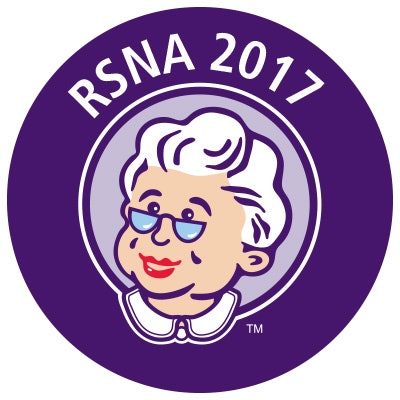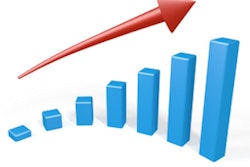
CHICAGO - Cardiologists have long contended the management of cardiac imaging by radiologists, including the use of coronary CT angiography (CCTA). However, a study presented on Thursday at RSNA 2017 revealed that radiologists now perform CCTA more frequently than cardiologists do.
Researchers led by Dr. David C. Levin from Thomas Jefferson University reviewed the usage rate of various cardiac imaging procedures by physicians and found that CCTA had a relatively low utilization rate that only began its resurgence in the past few years.
"You would think that with a new, exciting, and valuable tool like CCTA the overall utilization rate would have continued to go up, but that's not what happened," Levin told attendees."It dropped precipitously since its peak in 2007."
The slight rise in CCTA use in recent years stems from radiologists' increased use of the procedure, Levin said. Radiologists finally use CCTA more often than any other specialty after years of predominance by cardiologists.
The cardiac imaging wrangle
 Dr. David C. Levin from Thomas Jefferson University.
Dr. David C. Levin from Thomas Jefferson University.The often unspoken struggle over cardiac imaging between radiologists and cardiologists has historically favored cardiology. A prime example lies in the dispute between the specialties over the use of invasive percutaneous coronary angiography. Formerly, radiologists were heavily involved in the procedure, with many performing it themselves, but now they almost never participate.
"Now we're in a similar situation; we're talking about another kind of coronary angiography, and I would like to see radiologists maintain their roles in coronary CT angiography," Levin told AuntMinnie.com.
To investigate current trends in the handling of cardiac imaging, Levin and colleagues searched the U.S. Medicare Physician/Supplier Procedure Summary (PSPS) files from 2006-2015 for the utilization rates of cardiac imaging procedures. The data cover the nation's entire Medicare fee-for-service population in all places of service, which was approximately 37.5 million in 2015.
The researchers categorized this information by physician specialty for each imaging procedure, including CCTA, myocardial perfusion imaging (MPI), and stress echocardiography.
After studying the data, they discovered that the utilization rate of CCTA more than doubled, from 99 per 100,000 Medicare beneficiaries in 2006 to 210 in 2007, but steeply fell after this point until it reached a low of 107 in 2012. Only in the last two years of the dataset (2014-2015) did the CCTA usage rate start to recover by 9.3% from its lowest rate.
CCTA use by both cardiologists and radiologists followed this sudden rise and dip in the overall rate until 2012, at which point only the radiologists' use of CCTA began to increase.
| Usage rate of CCTA per 100,000 Medicare beneficiaries | ||
| Year | Cardiologists | Radiologists |
| 2007 | 126 | 67 |
| 2010 | 75 | 44 |
| 2013 | 52 | 49 |
| 2015 | 47 | 65 |
Cardiologists used CCTA nearly twice as much as radiologists in 2007; however, radiologists had a 38% higher CCTA usage rate in 2015.
The tides are turning
Radiologists have been performing coronary CT angiography more frequently than cardiologists have in recent years. What's the source behind this shift?
The labor-intensive nature of CCTA is one possible explanation, according to Levin. In addition, cardiologists occasionally need to interpret noncardiac parts of the CCTA scans -- a task some cardiologists may not be entirely comfortable completing alone.
Even more convincing may be the financial reasons, Levin continued. The high cost of multidetector CT scanners and specialized software combined with relatively poor reimbursement and denials by commercial insurance carriers have led cardiologists to question how worthwhile it is for them to perform the procedure themselves. For reference, the Medicare Physician Fee Schedule was $422 in 2016, with a return of only $121 for cardiologists performing these procedures.
Whatever the underlying cause may be, cardiologists appear to have lost enthusiasm for performing CCTA, while radiologists are using CCTA at a growing rate, he said.
Despite dropping by 35% from 2006, the utilization rate of myocardial perfusion imaging in 2015 was still much higher than that of CCTA. Stress echocardiography also had a much higher usage rate than CCTA in 2015, by nearly 10 times.
"There were 49 times as many MPIs done as CCTAs in 2015," Levin said. "That's something we need to change."
"The occurrence and suspicion of coronary artery disease has not dropped, but the usage rate of all three noninvasive interventions has," moderator Dr. Konstantin Nikolaou from University Hospital Tübingen said after the presentation. "So, where are all of these patients going?"
One possible explanation is that they are being evaluated more and more for medical therapies, which some physicians say are as good as invasive coronary angiography in cases of coronary disease that are not serious, Levin said.
Though what procedures cardiologists are referring patients to instead of CCTA may not be entirely clear, what is certain is that radiologists are once again increasing their utilization rate of CCTA.
"This may be one of those areas where radiologists actually begin to win what may potentially be another turf battle," Levin said.




















